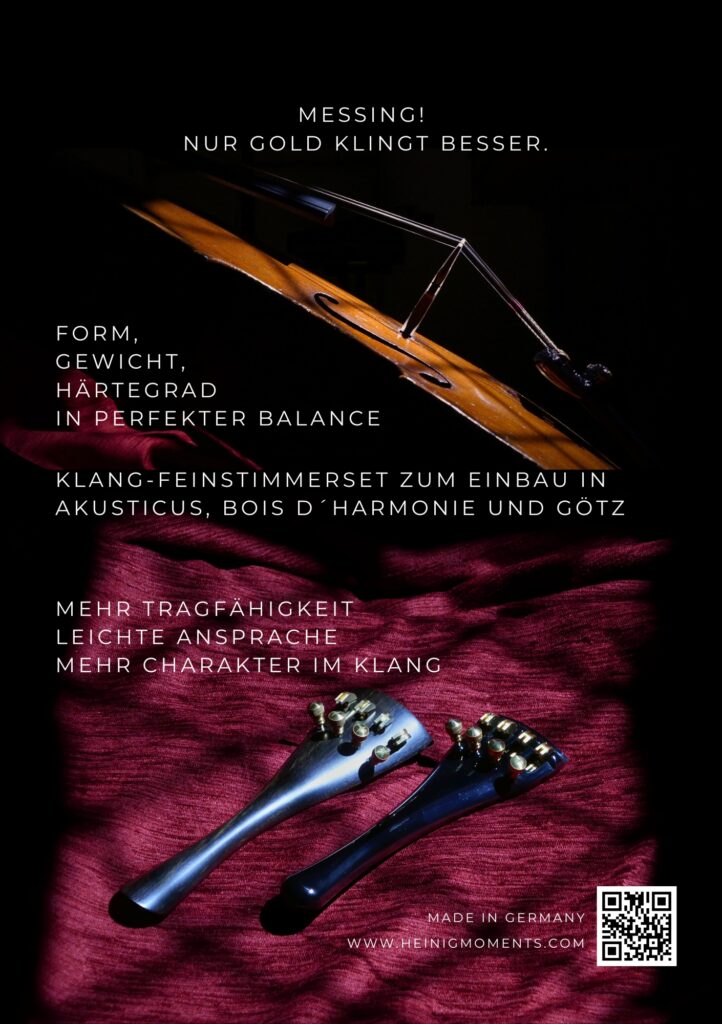
sound improving finetuners for cello, viola and violin available at these luthiers
Martin Erben, Munich, Germany https://erben-geigenbau.de
Marcel Richters, Vienna, Austria https://www.marcelrichters.com
Köstler Violins, Stuttgart, Germany https://koestler-violins.com/
Susanne Conradi, Augsburg, Germany https://conradimeistergeigen.de/
Ludger Geiger, Nuremberg, Germany https://www.geigenbau-geiger.de/
Geigenbauatelier Ulm, Germany https://www.geigenbauatelier-ulm.de/
Osamu Nambu, Munich, Germany
König & Betcher, Nuremberg, Germany https://koenig-betcher.de/
Suitable for installation into the cello tailpieces Akusticus, Bois d´harmonie and Götz
As a cellist, both professional and amateur, you know that your own abilities are influenced to a significant extent by your own instrument. Therefor one is almost always looking for an improvement of the playability, i.e. the easy response of the strings and the better sound. Every musician knows in this context that these are very individual requirements, which the violin maker should then anticipate and adjust on the instrument.
These new finetuners
fully meet the desire for simply more sound and more precision. The instrument doesn´t get a different tone or even a different character. It gets more sound character of its own. Especially in interaction with other musicians and in larger spaces, the cello is much more assertive. The response behavior improves significantly; especially in the upper half of the bow you have much less work. The range between fine and powerful playing is expanding. In addition, the strings also sound good for twice as long. The costly need to constantly change the A-string disappears. The beautiful sound remains!

How is that supposed to work?
If you reach the point with your cello where you want to use a supposedly better tailpiece, endpin or another hanging string, you are often advised to use light, stiff materials. What is the advantage of a light tailpiece? The answer usually is: “It will vibrate better.” From an analytical point of view, this means that the strings behind the bridge vibrate better. Unfortunately, these uncontrollable vibrations are transmitted back to the bridge and influence or disturb the vibrations produced by the cellist himself. The effect of this brass fine tuner setup is made up of three components: The shape – it is designed in such a way that the incoming vibrations are optimally processed. After all, a brass bell sounds better than the brass block from which it was made. The weight – it calms the tailpiece, so the vibrations generated by the player are not affected. The degree of hardness – the string is given a solid and stiff suspension and therefore vibrates faster in and longer out. A harder and lighter metal, such as titanium, would reflect the vibrations behind the bridge more strongly back to the bridge. The effect of reducing the vibrations of the tailpiece would be
turn into the opposite. There are certainly instruments that reward a change to titanium or plastic accessories with an improvement in sound. Compared to brass, however, this is less common.
